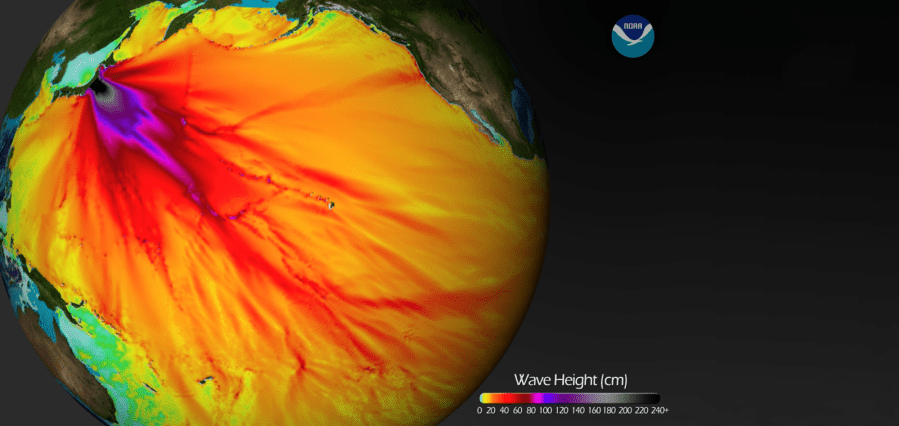A massive 8.8 magnitude earthquake struck 80 miles off the east coast of Russia on Tuesday night, prompting a tsunami advisory for Southern California that will remain in place until Saturday.
Tsunami warnings and advisories were issued for many countries as a result of the quake, including along the west coast of the U.S.
The National Oceanic and Atmospheric Administration (NOAA) has outlined its alert system, explaining the differences between a warning, an advisory, a watch and even an information statement.
- A tsunami warning is issued when a tsunami is happening or about to happen. Dangerous coastal flooding and powerful currents are possible. Residents are urged to move to higher ground or further inland immediately.
- A tsunami advisory is issued for strong currents and waves that may be dangerous to those in or very near the water. The public should stay out of the water and away from beaches and waterways.
- A tsunami watch is issued when a distant earthquake has occurred and a tsunami is possible. Residents need to know their evacuation route and be ready to act quickly if a warning is issued.
- A tsunami information statement is issued when there is no threat, or a very distant event has occurred and no threat has been determined. No action is needed from the public at this time.
NOAA defines a tsunami as a “series of extremely long waves caused by a large and sudden displacement of the ocean, usually the result of an earthquake below or near the ocean floor.”

As a tsunami approaches land, NOAA says that it begins to slow down and the wavelength also decreases, but the wave height increases and the currents intensify.
